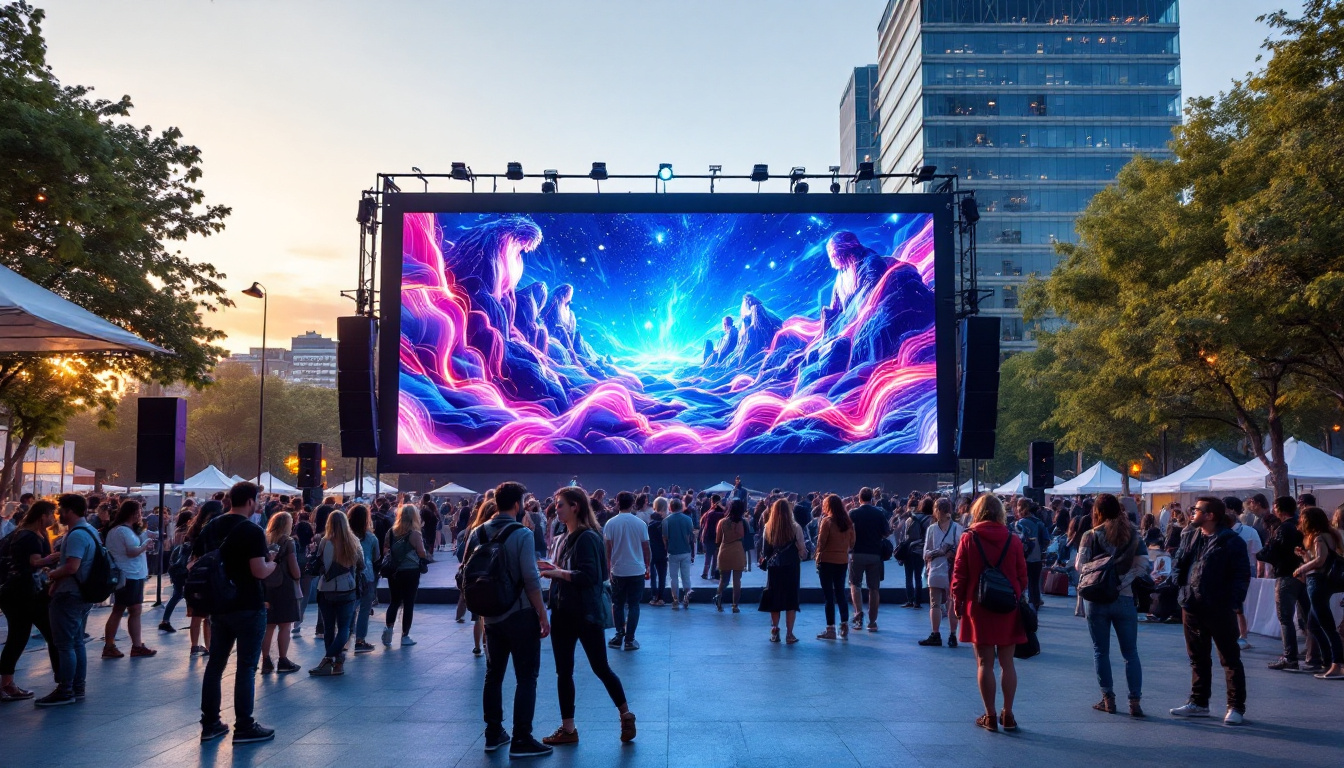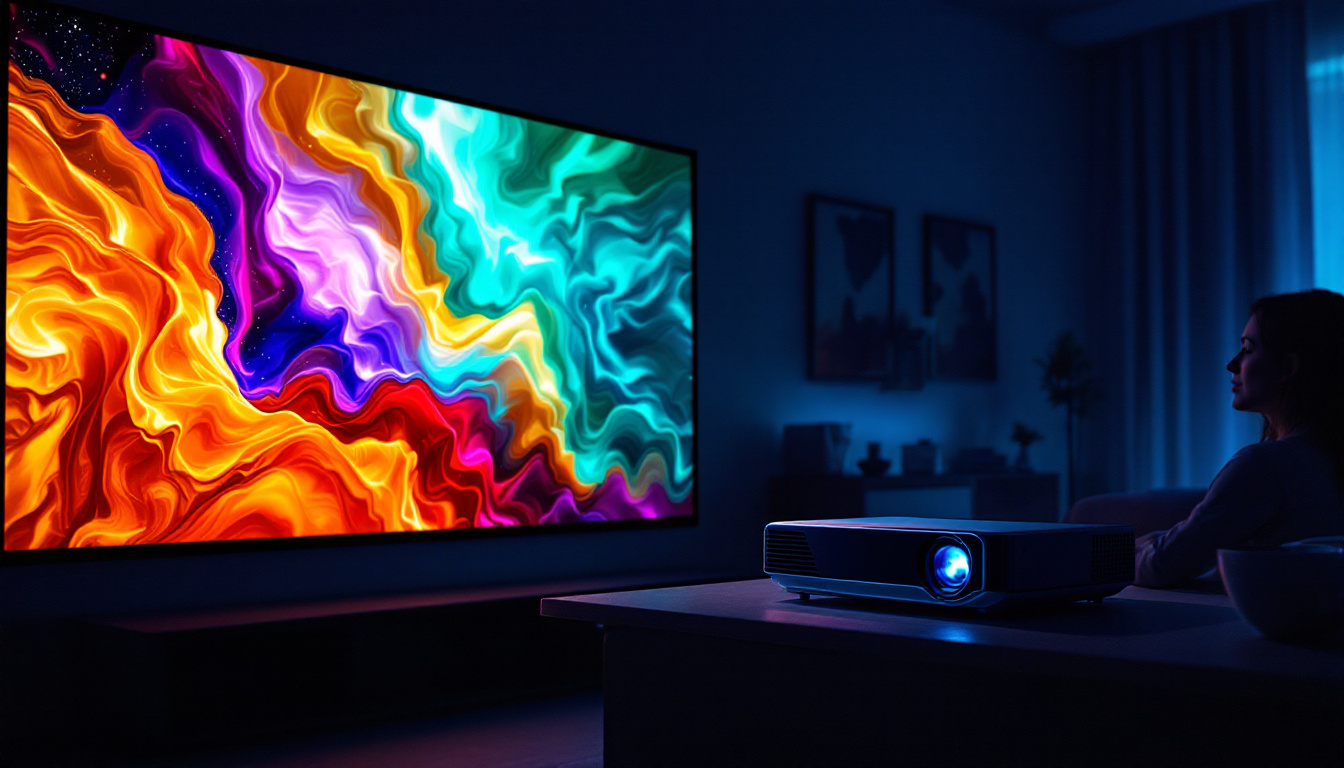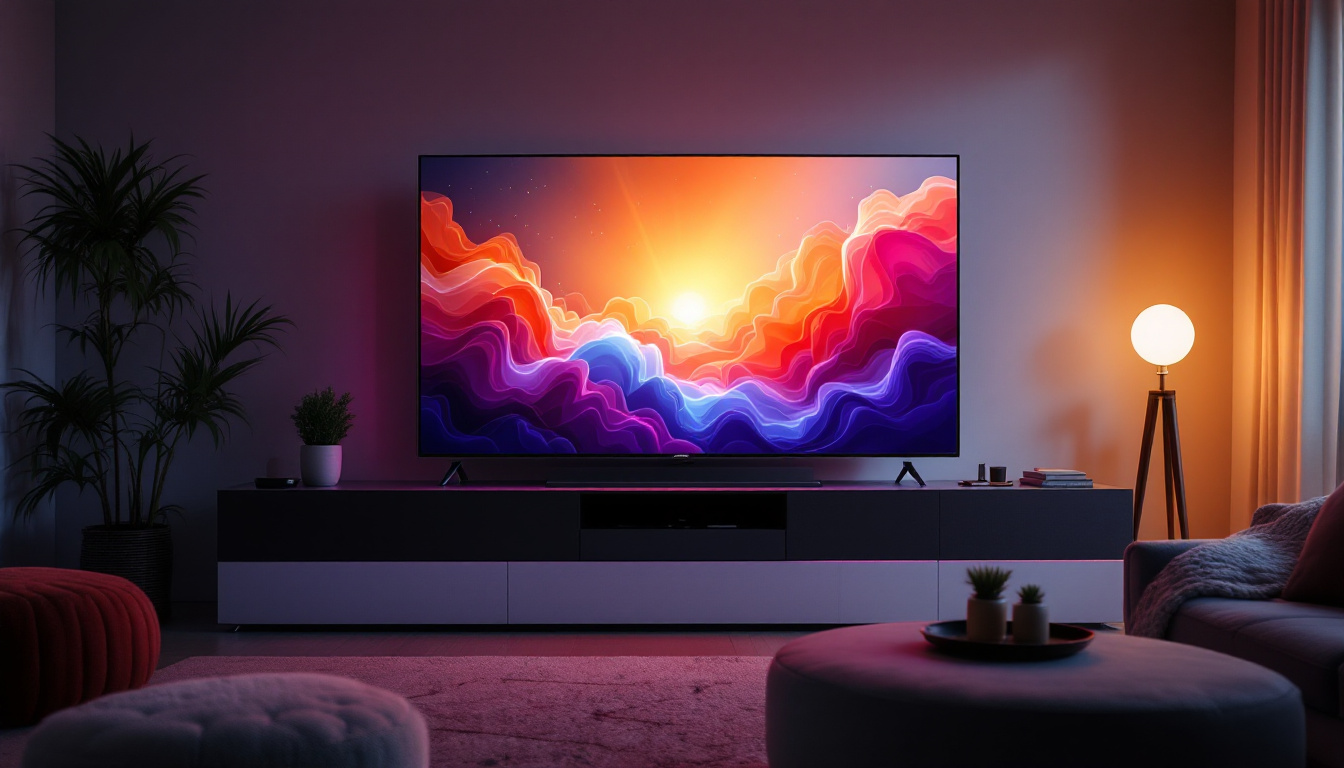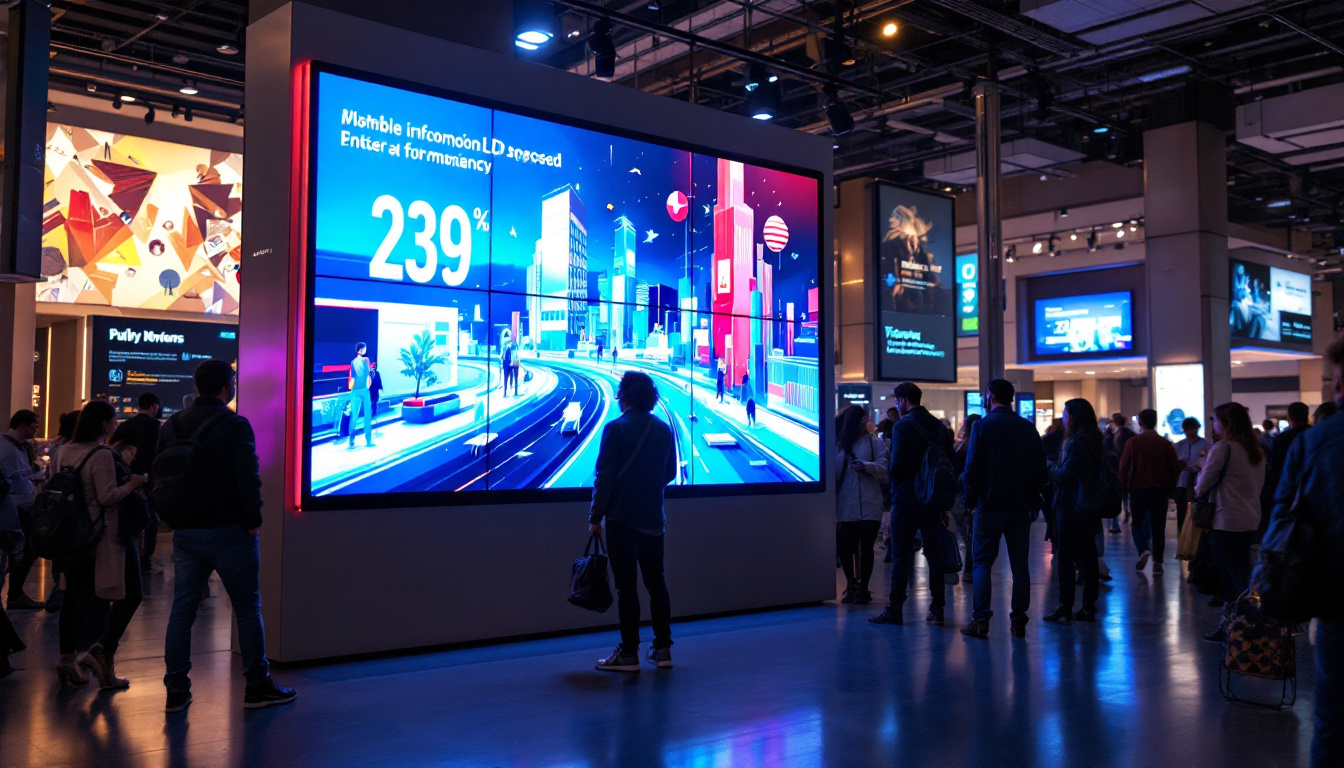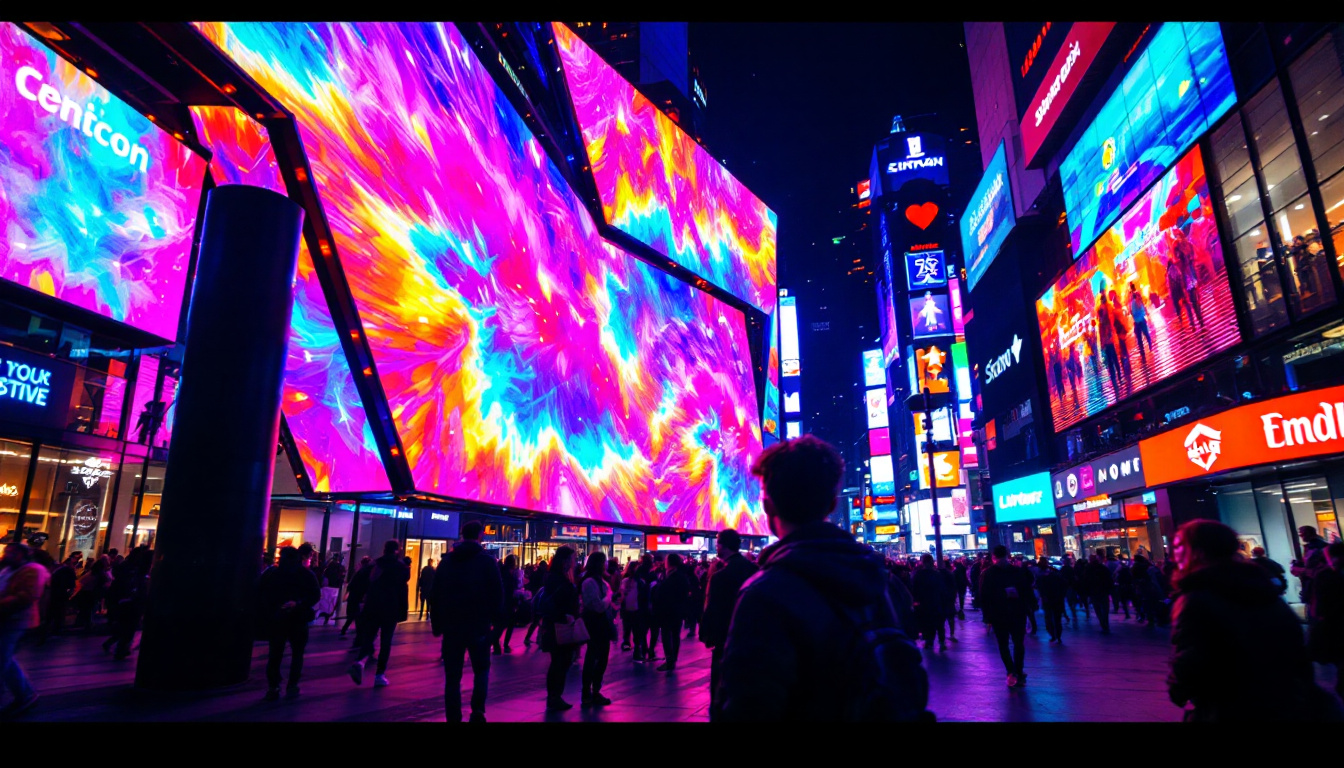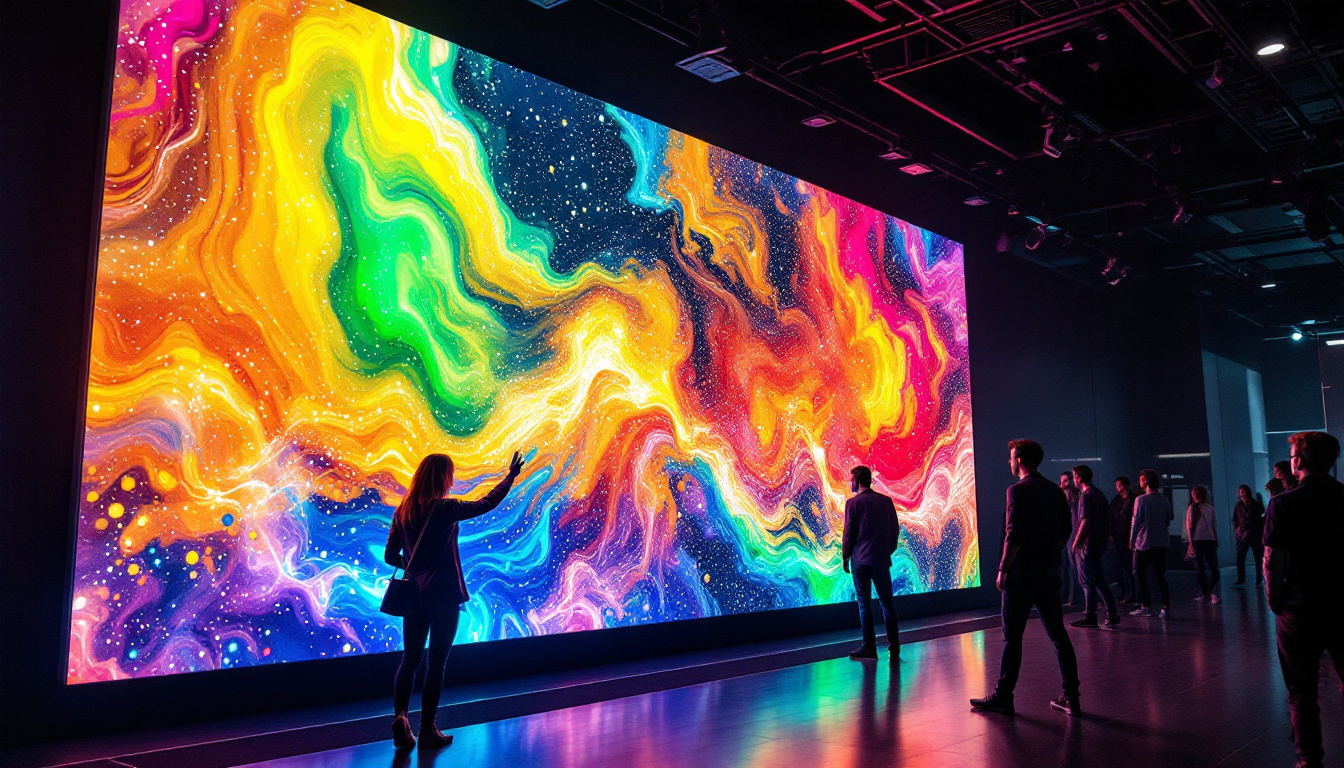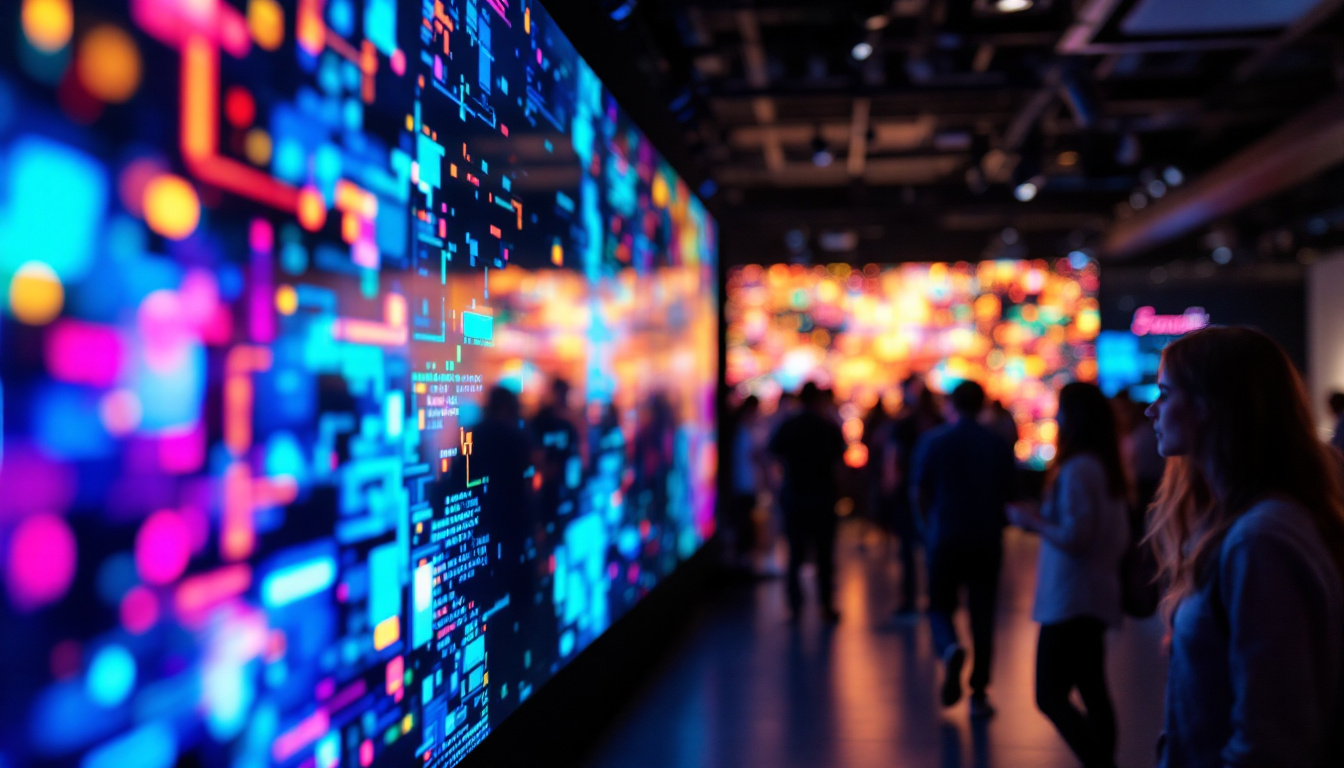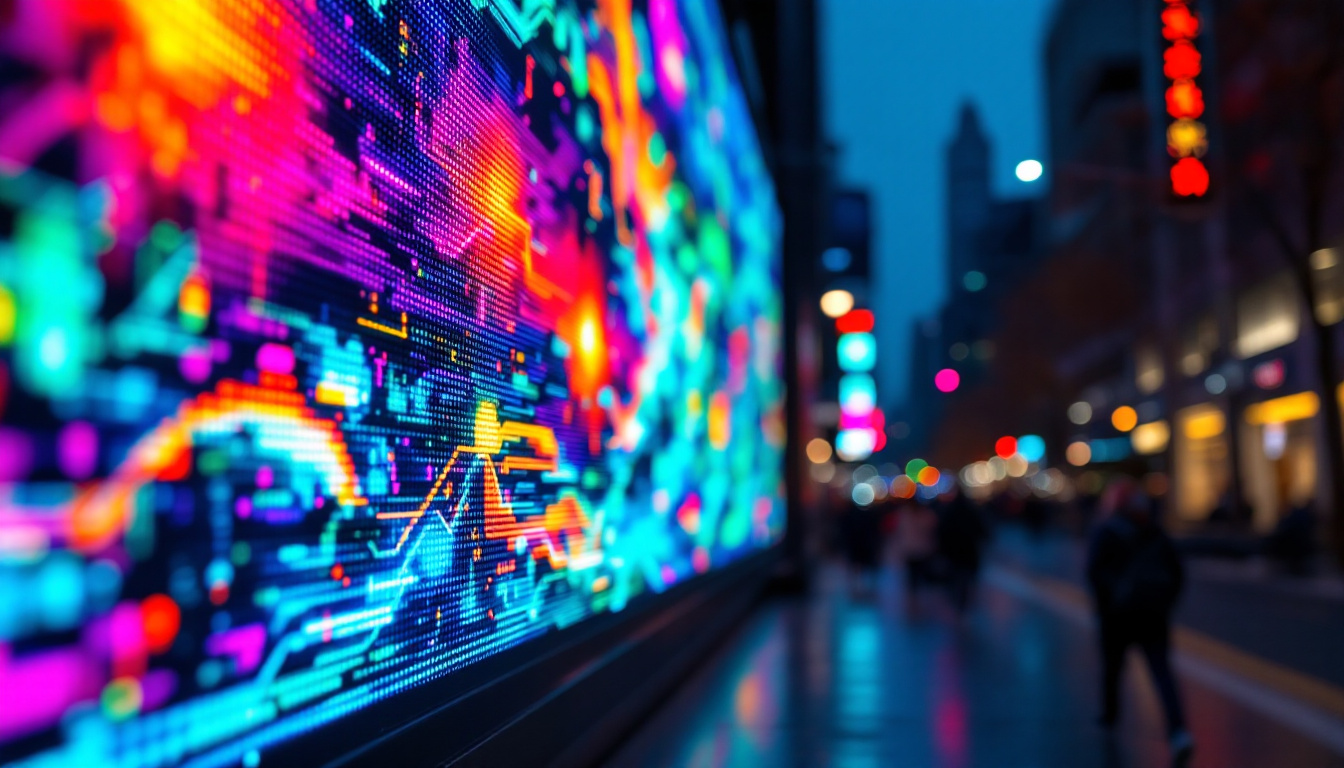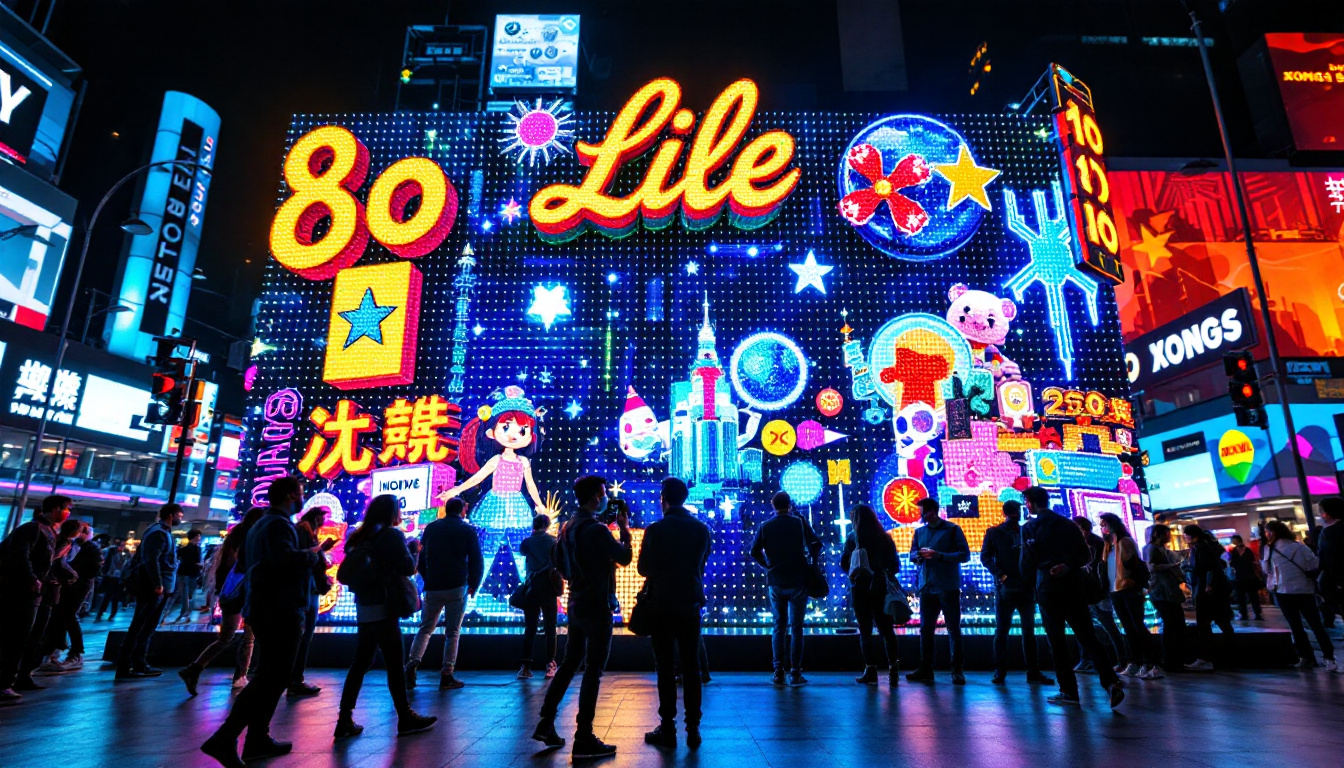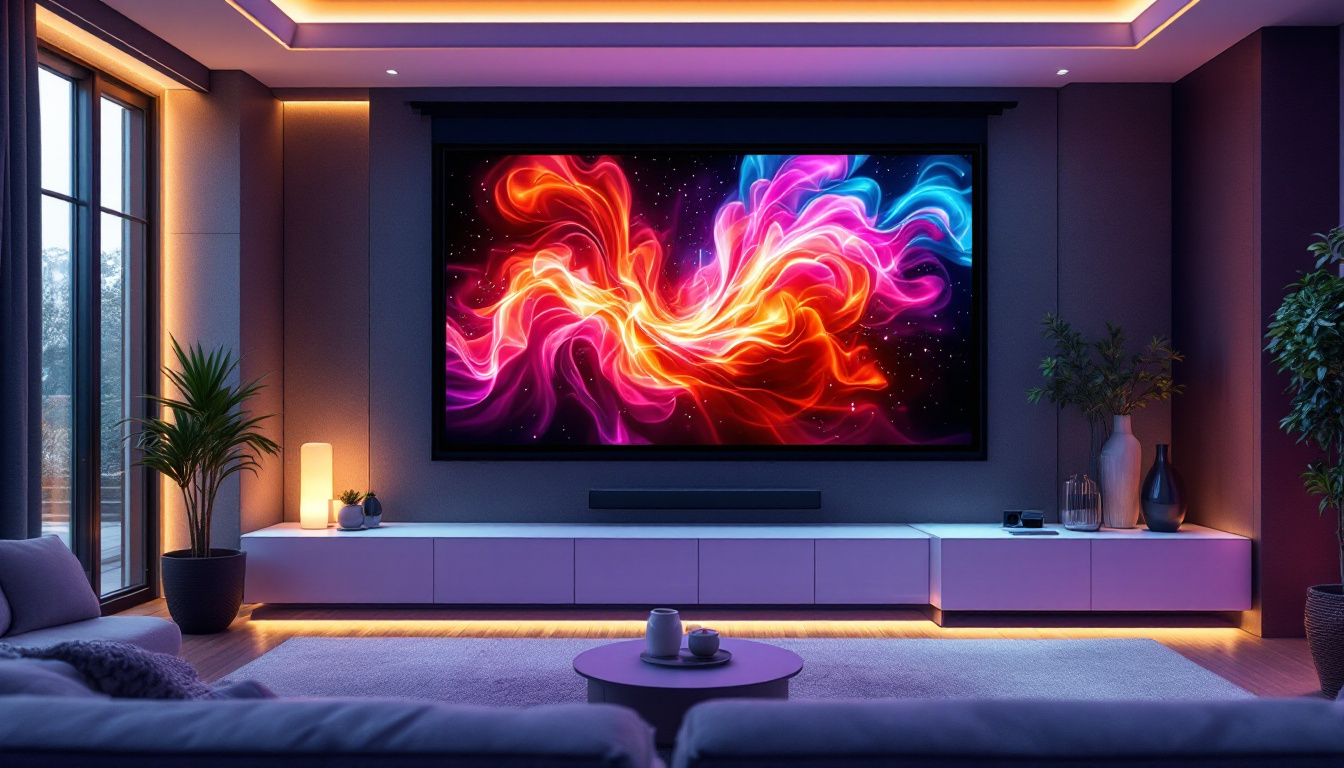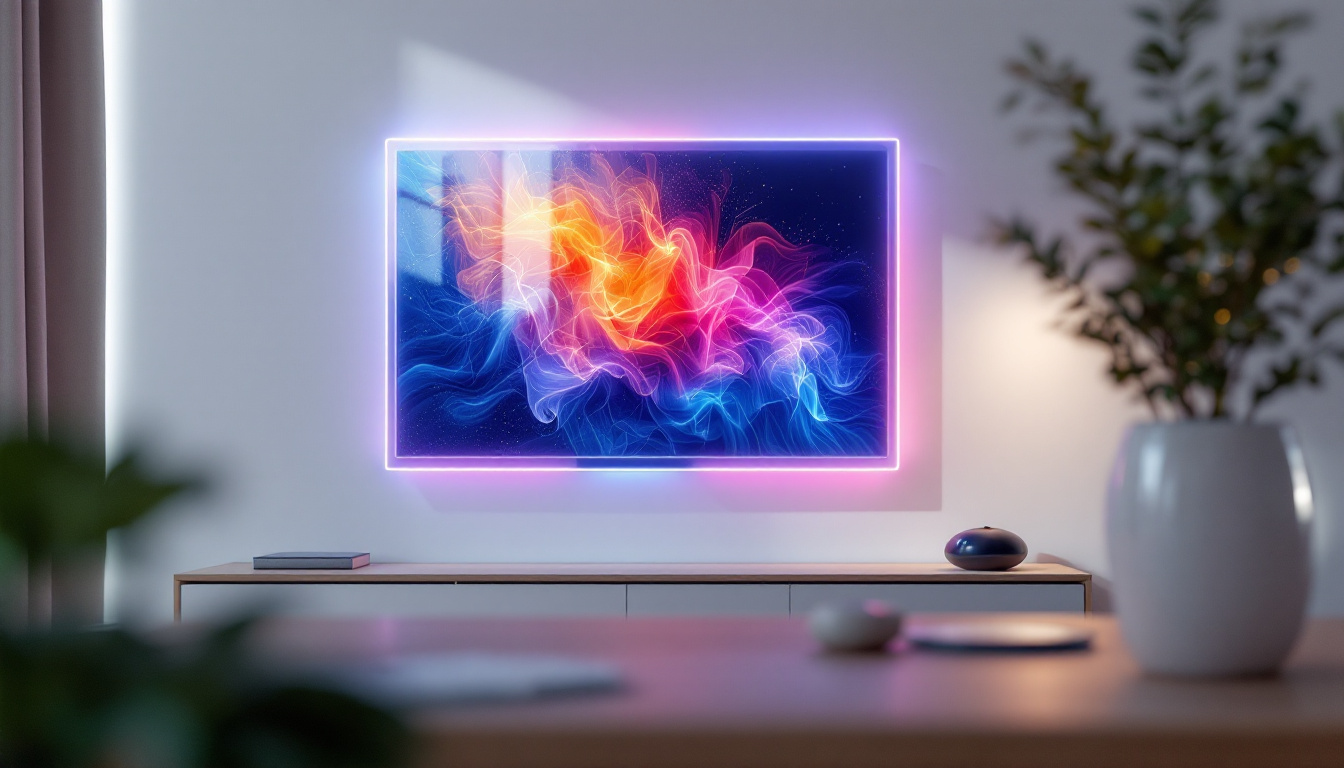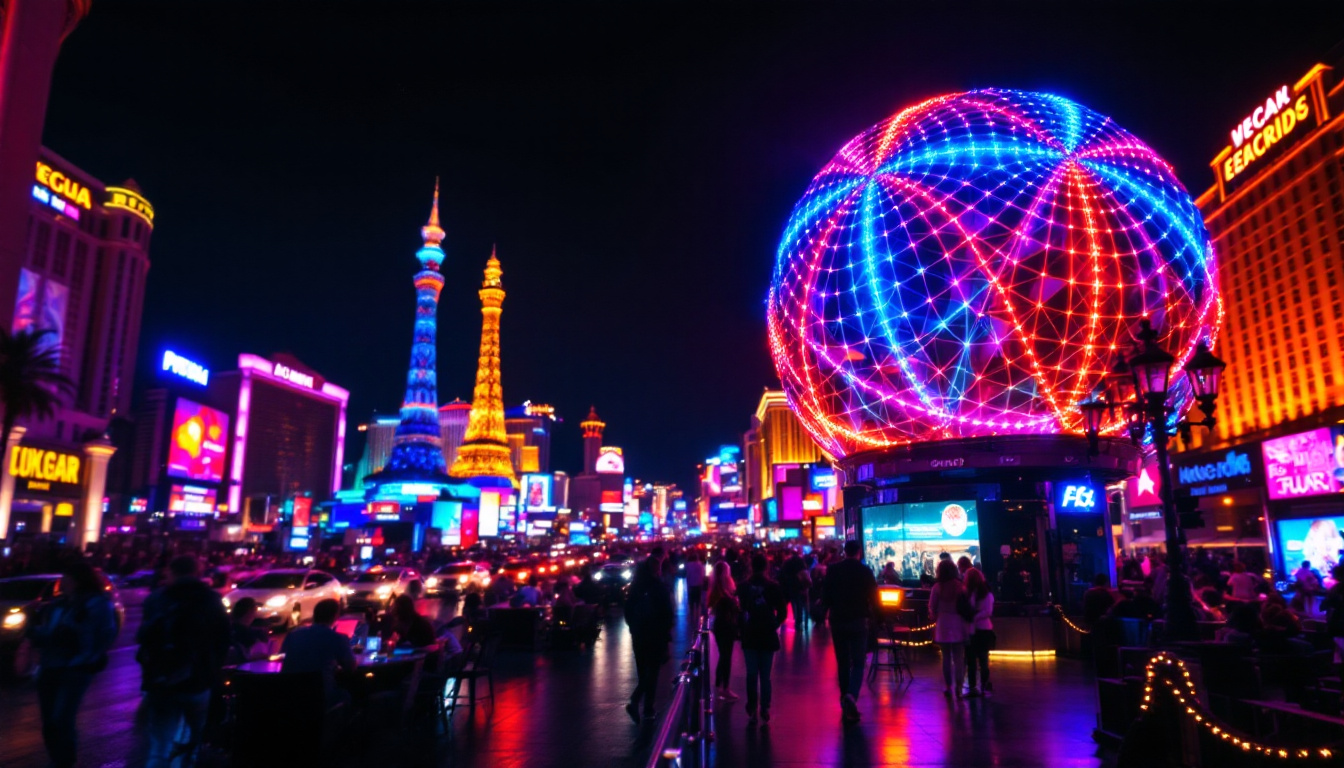In the rapidly evolving world of digital signage and display technology, LED displays have emerged as a dominant force. From vibrant billboards that light up cityscapes to dynamic screens in stadiums and retail environments, LED displays are everywhere. But what exactly are LED displays, how do they work, and why have they become the preferred choice for so many applications? This comprehensive guide dives into the technology behind LED displays, their advantages, applications, and future trends shaping their development.
Understanding LED Display Technology
What is an LED Display?
LED stands for Light Emitting Diode, a semiconductor device that emits light when an electric current passes through it. An LED display is a flat panel display that uses an array of LEDs as pixels to produce images, videos, and text. Unlike traditional LCD or plasma screens that rely on backlighting, LED displays generate their own light, allowing for brighter and more vivid visuals.
These displays can be configured in various sizes and resolutions, from small indoor screens to massive outdoor billboards. The modular nature of LED panels means they can be assembled into virtually any shape or dimension, making them highly versatile. This adaptability has led to their widespread use in various industries, including advertising, entertainment, and even transportation, where they play a crucial role in information dissemination and branding.
How Do LED Displays Work?
At the core of an LED display are tiny LEDs arranged in a grid. Each LED acts as a pixel or part of a pixel, emitting red, green, or blue light. By varying the intensity of these three colors, the display can produce a full spectrum of colors, enabling rich and detailed images. The precision with which these colors can be mixed allows for stunning visual effects, making LED displays a popular choice for everything from concerts to art installations.
The LEDs are controlled by a driver circuit and a processing unit that receives input signals from a video source. This system adjusts the brightness and color of each LED in real-time, creating dynamic content. The refresh rate of LED displays is typically very high, which reduces flicker and provides smooth motion, crucial for video playback and live broadcasts. Additionally, advancements in technology have led to the development of smart LED displays that can integrate with IoT devices, allowing for interactive experiences and real-time content updates based on audience engagement.
Types of LED Displays
There are several types of LED displays, each suited for different environments and uses:
- Indoor LED Displays: Designed for controlled lighting environments, these displays have a higher pixel density (smaller pixel pitch) for close viewing distances. They are commonly used in conference rooms, retail stores, and indoor advertising. The ability to display high-definition content makes them ideal for presentations and promotional displays, enhancing customer engagement.
- Outdoor LED Displays: Built to withstand harsh weather conditions, these displays have a lower pixel density but much higher brightness levels to combat sunlight glare. They are ideal for billboards, sports arenas, and public information screens. Their durability and visibility make them a favorite for outdoor events and advertising campaigns, ensuring that messages are seen even in direct sunlight.
- Transparent LED Displays: These innovative displays allow light to pass through them, making them perfect for storefront windows and glass facades where maintaining visibility is important. This technology not only enhances advertising potential but also allows businesses to create immersive experiences without obstructing the view of the products behind the display.
- Flexible LED Displays: Using bendable substrates, these displays can curve or wrap around surfaces, opening creative possibilities for architectural integration and artistic installations. Their flexibility allows designers to create unique shapes and forms, pushing the boundaries of traditional display technology and enabling new artistic expressions in public spaces.
Moreover, advancements in LED technology have led to the emergence of MicroLED and MiniLED displays, which offer even greater resolution and color accuracy. These cutting-edge technologies are paving the way for next-generation displays that promise to deliver unparalleled visual experiences, whether in home entertainment systems or large-scale commercial applications. As the demand for high-quality visual content continues to grow, the evolution of LED display technology remains at the forefront of innovation in the digital age.
Advantages of LED Displays Over Other Technologies
Brightness and Visibility
One of the most significant advantages of LED displays is their exceptional brightness. Outdoor LED screens can reach brightness levels of 5,000 to 8,000 nits, far surpassing LCD screens, which usually max out around 1,000 nits. This makes LED displays highly visible even in direct sunlight, an essential feature for outdoor advertising and public information systems.
Energy Efficiency and Longevity
LEDs are inherently energy-efficient compared to other light sources. They consume less power while delivering high brightness, which translates to lower operational costs, especially for large-scale installations. Additionally, LEDs have a long lifespan, often exceeding 100,000 hours of use, reducing maintenance and replacement frequency.
Color Accuracy and Contrast
Because each LED emits its own light, LED displays can achieve true blacks by turning off pixels completely, resulting in infinite contrast ratios. This capability enhances color accuracy and image depth, delivering a more immersive viewing experience. This is particularly important for applications like digital art displays, broadcast studios, and high-end retail environments.
Scalability and Customization
LED displays are highly modular, allowing for easy scaling from small indoor panels to massive outdoor walls. This flexibility means businesses can tailor displays to fit specific spatial and design requirements without compromising image quality. Custom shapes and curved displays are also possible, supporting creative and architectural innovation.
Applications of LED Displays Across Industries
Advertising and Digital Billboards
LED displays have revolutionized outdoor advertising by enabling dynamic, eye-catching content that can be updated in real-time. According to recent industry reports, the global digital signage market is expected to grow at a compound annual growth rate (CAGR) of over 8% through 2027, largely driven by the adoption of LED technology.
Major cities like New York, Tokyo, and London feature iconic LED billboards that attract millions of viewers daily. These displays allow advertisers to deliver targeted messages, incorporate interactive elements, and adjust campaigns based on time of day or audience demographics.
Sports and Entertainment Venues
Stadiums and arenas extensively use LED displays for scoreboards, instant replays, and immersive fan experiences. The ability to produce large, bright, and seamless images ensures visibility from any seat, enhancing engagement. For example, the AT&T Stadium in Texas boasts one of the largest LED video boards in the world, measuring over 160 feet wide.
Concerts and festivals also rely on LED walls for stage backdrops and live video feeds, offering high brightness and durability to withstand outdoor conditions.
Retail and Corporate Environments
Indoor LED displays are increasingly popular in retail stores to showcase promotions, product information, and brand messaging. Their high resolution and brightness attract customer attention and can be integrated with interactive technologies like touchscreens.
In corporate settings, LED walls are used for presentations, video conferencing, and digital signage in lobbies and meeting rooms. Their sleek design and superior image quality contribute to a modern, professional atmosphere.
Transportation and Public Information
LED displays play a critical role in transportation hubs such as airports, train stations, and bus terminals. They provide real-time updates on schedules, delays, and safety information. The clarity and visibility of LED screens ensure passengers receive timely and accurate messages, improving overall travel experience.
Key Considerations When Choosing an LED Display
Pixel Pitch and Resolution
Pixel pitch, the distance between the centers of two adjacent LEDs, directly affects image resolution and viewing distance. Smaller pixel pitches provide higher resolution and are suitable for close-up viewing, while larger pixel pitches are better for distant viewing scenarios.
For example, indoor displays often feature pixel pitches as low as 1.2mm, delivering crisp images for audiences just a few feet away. Outdoor displays might have pixel pitches ranging from 6mm to 20mm, optimized for visibility from tens or hundreds of feet.
Brightness and Environmental Conditions
Understanding the installation environment is crucial. Outdoor displays require high brightness levels and weatherproofing to withstand sunlight, rain, and temperature fluctuations. Indoor displays prioritize resolution and color accuracy over extreme brightness.
Viewing Angle and Installation Flexibility
LED displays typically offer wide viewing angles, but this can vary based on design and LED type. Ensuring the display is visible from all intended viewing positions is essential. Additionally, considerations around mounting, weight, and power supply impact installation feasibility.
Control Systems and Content Management
Modern LED displays integrate with sophisticated content management systems (CMS) that allow remote updating, scheduling, and monitoring. Selecting a display with compatible and user-friendly control software can significantly enhance operational efficiency.
Future Trends in LED Display Technology
Mini-LED and Micro-LED Innovations
Emerging technologies like Mini-LED and Micro-LED promise to push the boundaries of LED display performance. Mini-LEDs are smaller than traditional LEDs, allowing for even higher pixel densities and improved contrast. Micro-LEDs take this further, offering self-emissive pixels at microscopic scales, enabling ultra-high resolution and brightness with exceptional energy efficiency.
These advancements are expected to impact consumer electronics, such as televisions and smartphones, as well as commercial displays.
Integration with AI and Interactive Technologies
Artificial intelligence (AI) is beginning to influence digital signage by enabling personalized content delivery based on audience demographics, behavior, and environmental factors. Combined with sensors and cameras, LED displays can adapt in real-time to optimize viewer engagement.
Interactive LED displays, incorporating touch, gesture recognition, and augmented reality, are also gaining traction, especially in retail and experiential marketing.
Sustainability and Energy Efficiency
As sustainability becomes a priority, LED display manufacturers are focusing on reducing energy consumption and using eco-friendly materials. Innovations in power management and recyclable components aim to minimize environmental impact while maintaining performance standards.
Conclusion
LED displays have transformed the way information and advertising are presented across numerous industries. Their brightness, versatility, and scalability make them an ideal choice for everything from massive outdoor billboards to intricate indoor installations. Understanding the technology, advantages, and key considerations can help businesses and organizations select the right LED display solutions to meet their needs.
With ongoing advancements like Mini-LED and Micro-LED technologies, and the integration of AI-driven content management, the future of LED displays promises even more dynamic, efficient, and engaging visual experiences. As this technology continues to evolve, staying informed is essential for leveraging the full potential of LED displays in any application.
Discover LumenMatrix’s Innovative LED Solutions
Ready to elevate your visual communication with cutting-edge LED technology? LumenMatrix offers a comprehensive range of LED display solutions tailored to meet your unique needs. From immersive Indoor LED Wall Displays to dynamic Outdoor LED Wall Displays, and from versatile Vehicle LED Displays to eye-catching LED Sports Displays, our products are designed to captivate your audience and amplify your message. Experience the future of digital signage with LumenMatrix and transform your space into a vibrant canvas of possibilities. Check out LumenMatrix LED Display Solutions today and see how our commitment to innovation can enhance your brand visibility and create unforgettable visual experiences.


